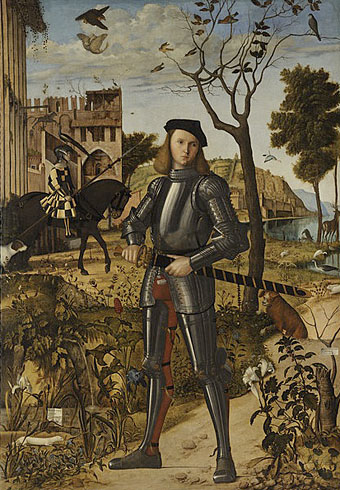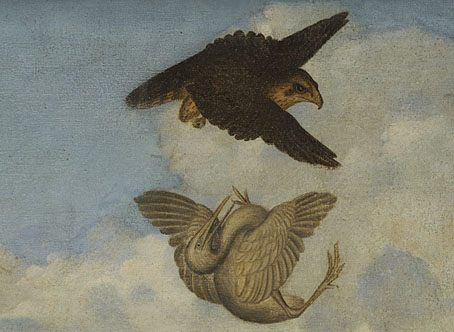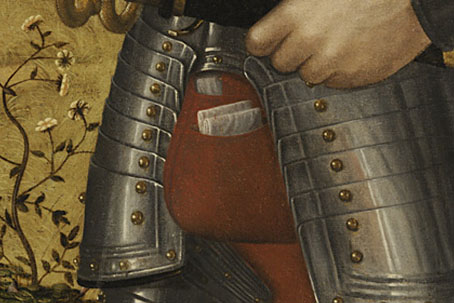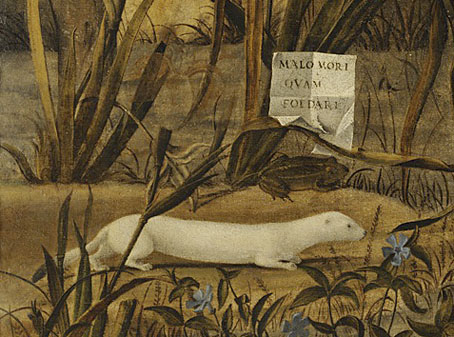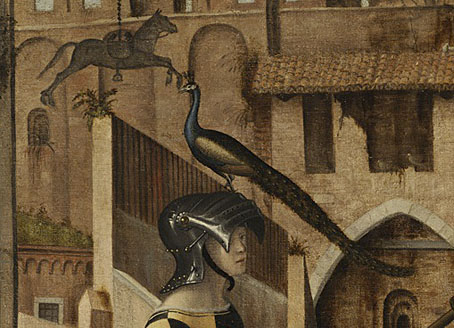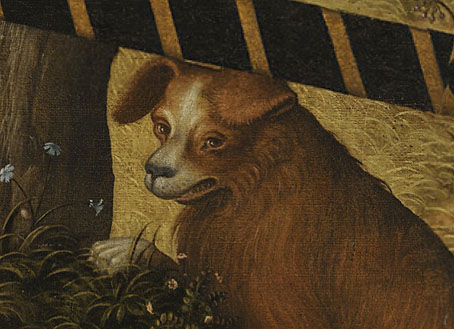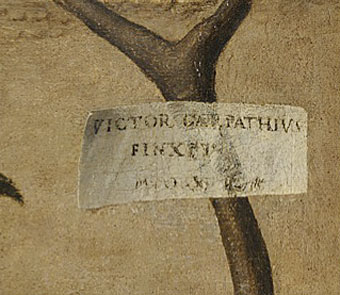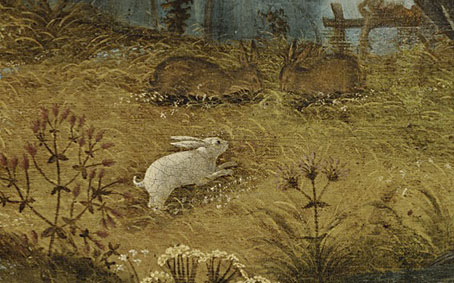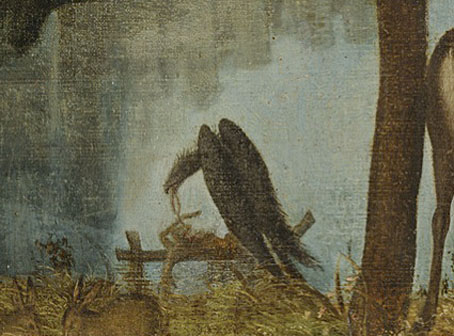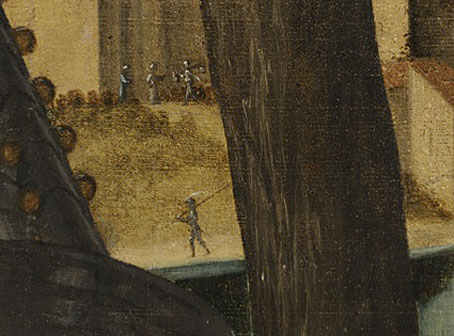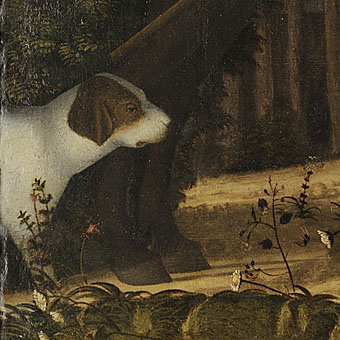Young Knight in a Landscape (1510).
A painting by Venetian artist Vittore Carpaccio (c. 1460–1525/26) replete with natural detail. Many of these details, the animal ones in particular, are no doubt symbolic, although what they symbolise can change over time, and may also refer to the personal mythology of the family for whom the painting was created. Dogs often represent fidelity but the dog crouching on the path behind the knight wears an expression that may be taken for a snarl. The hawk knocking another bird from the sky is more obviously a symbol of belligerence which suits the action of drawing a sword.
The note for this painting says it was attributed to Albrecht Dürer until 1919, something I find surprising. The vegetation is certainly painted with a Dürer-like precision but Dürer was equally precise with his figures, and would have paid more attention to the modelling of the hands. One detail I don’t recall seeing before is the codpiece pocket. The Scottish sporran often has a pocket in the back, there being no pockets in kilts or, for that matter, in suits of armour.
Previously on { feuilleton }
• Eustace details

